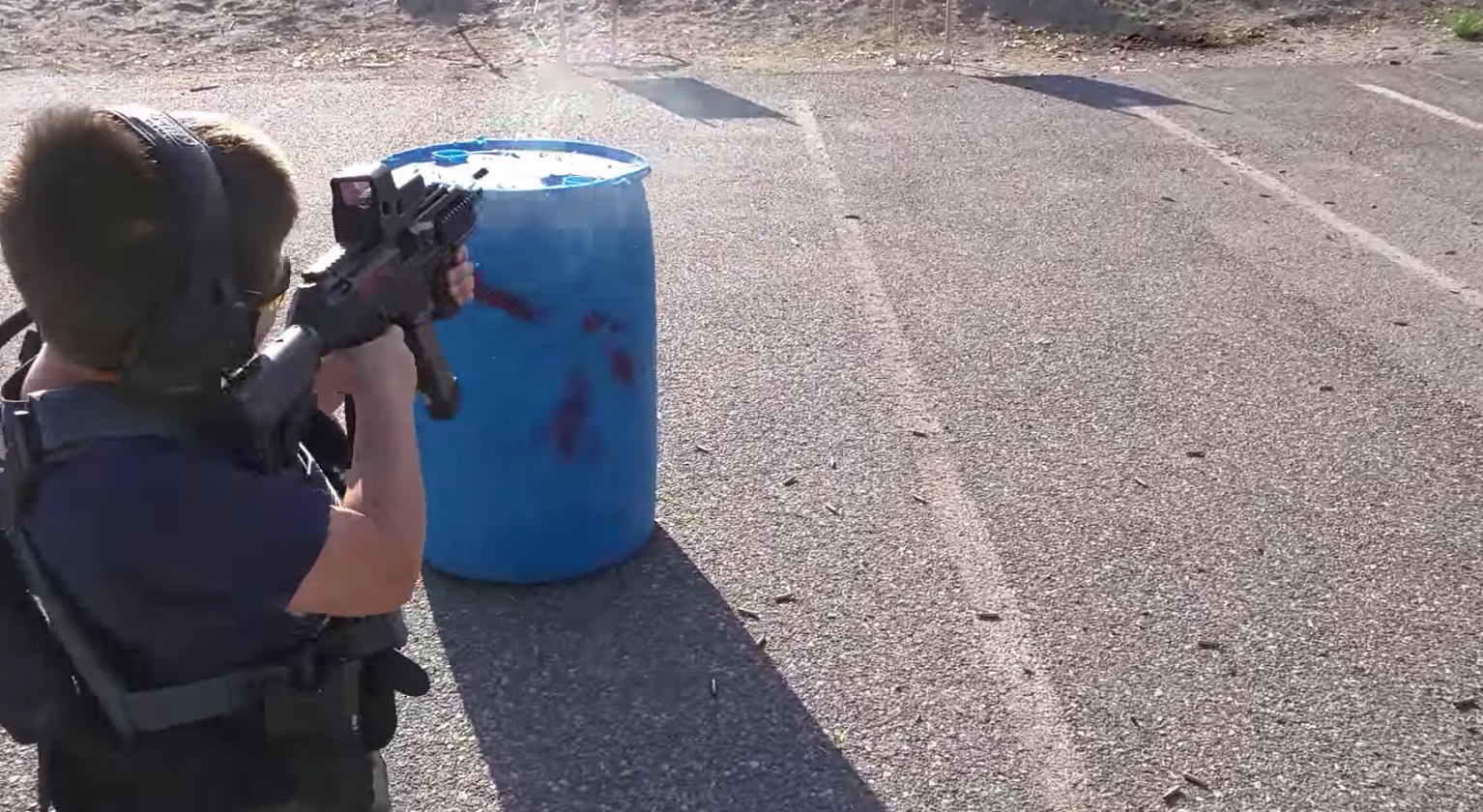Have you ever wondered if it’s actually STUPID to worry about preparing to defend yourself or the life of a loved one?
If it’s silly or over-reacting to learn how to defend yourself with your bare hands or *GASP* carry a gun every day of your life?
If you live in a “nice” part of the United States, then the chances are you don’t deal with or see violent crime on a day-to-day basis. In fact, most violent crime won’t get reported in your city, unless you look for it in the pages of your local newspaper or news website.
So for many of us, we’re actually shielded from the dark underside of the violent crime in our own communities …
Which begs the question, how DO you know what your actual odds are to encounter violent crime AKA how do you perform your own personal threat assessment?
Perceived Threat Level VS Actual Threat Level
For many people their “perceived threat level” is different than their “actual” threat level.
Why is that?
Part of it is because of what we’ve just discussed. Unless you work in the Police department of your community you probably are shielded from all the violent crime in your local neighborhoods.
It seems that Police always have to deal with the “crazies” and (obviously) the local criminals.
So you might perceive that your threat level in your nice suburban neighborhood is very, very low. But that could be a mistake.
Then again, you could be right. You live in a nice neighborhood, you don’t go out at night, you don’t do drugs or hang out with people who do, and you work in a nice office building that’s “secure”. So your perceived threat level is very low.
You Simply Never Know
Here’s the thing though … you never know.
Life is fluid and dynamic.
This could be the day that two convicted killers escape from a Prison and their escape route happens to take them through your local, quiet neighborhood–they see you sitting in your car at a traffic light and decide they need to kill you to get your car to make their getaway.
Your actual threat level is now quite high, yet because you’ve never prepared–because you perceived that it would always be low–you could be dead.
Or you work in a “secure” office building that doesn’t allow concealed carry. Your coworker just got fired and he decides to come back and start cutting off heads with a machete.
The point here is that you never know and that life is fluid and dynamic and ever changing, so your perceived threat level being low could change awfully quick to super high actual threat level.
Violent Crime Statistics
In case you’re into math, the Bureau of Justice Statistics (BJS) is part of the US Department of Justice (DOJ) and they publish an annual report on “Violent Crime”. There are only 5 crimes that make this up, they are murder, aggravated assault, robbery, forcible rape, and assault.
In 2011, there were 5,800,000 (5.8 million) of these 5 crimes in the US. In other words, one in every thirty adults was involved in a violent crime. In urban areas, as you might expect the rate is higher, but even in suburban areas, it’s one in fifty.
So ask yourself this, how many people do you see or interact with in one day? 10? 20? 50?
What about this entire year? Do you think you’ll interact with — or even walk past, drive past, or talk to more than 50 people this year?
The odds are you will. So even your “odds” aren’t that great.
That said, there’s a great way to increase your odds, to quote John Farnham, “don’t do stupid things in stupid places with stupid people.” But still. Those aren’t great odds.
Low Probability VS High Stakes
Now, let’s also consider that when we’re talking about your life or the life of a loved one, the odds simply do NOT matter.
Why?
Because it’s what’s at stake that’s important.
In other words, “It’s not the odds, it’s the stakes!”
If you or a loved one are a victim of violent crime, that will affect your life forever. Period.
Look at it this way …
What are the odds your house will burn down? Not too terribly great, if you’re not dumb with fire, but you still buy home insurance because the thought of losing EVERYTHING is so great.
What are your odds of being in a serious car crash? Also, not really high (unless you’re a teenager), but it makes sense to wear your seatbelt because the result could be death or being seriously crippled. Or worse, a loved one could be crippled, mamed, or dead. So you also buy car insurance.
We all understand that the idea of “insurance” is in the unlikely case that something happens, we outlay a small amount of time/money now because the potential downside is unlikely but incredibly devastating.
It’s Simply Better To Be Prepared Because There’s No Downside
The point here is that learning how to defend yourself with your hands, getting in better physical shape, and carrying a gun are both insurance and there is LITERALLY no downside.
If you carry a gun every day of your life for 40 years and you NEVER have to use it, what have you lost? Not a darn thing …
But if you don’t carry it just once, and something happens to you or a person you love then you could lose everything.
And let’s be honest here …
Anyone who starts out on this path of learning how to defend themselves either un-armed or with tools (guns, knives, etc) is embarking on a journey of self-improvement.
It’s not time wasted.
The average American spends 5 hours per day watching TV. There is, literally, nobenefit to that.
Exercising because your life might depend on it? That will pay off in so many ways you can’t count them …
Learning how to fight both un-armed and armed? You’ll become a better, stronger, smarter, more well adjusted person — I guarantee it.
The bottom line is that there is no downside to being prepared, but it could take just one moment to lose everything important to you. So why not spend more time being prepared?










![What Level Holster Should You Be Using? [Video]](/wp-content/uploads/2024/04/Depositphotos_44548439_S-218x150.jpg)
![Case Study: Defensive Gun Use [Video] NSFW](/wp-content/uploads/2025/07/Depositphotos_282075792_S-218x150.jpg)




















![Optic Ready vs Milled slides? [Video]](/wp-content/uploads/2024/02/image-3-100x70.png)
![[Checklist] What Gear You Need To Take Pistol, Rifle & Shotgun Training Courses [Video]](/wp-content/uploads/2023/07/Depositphotos_275087632_L-100x70.jpg)
![What is in Carter’s 2023 EDC? [Video]](/wp-content/uploads/2023/07/Depositphotos_146856137_L-100x70.jpg)



A simple concept, amazing that so many just can’t grasp it.
Comments are closed.